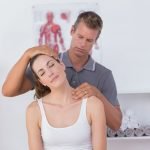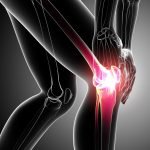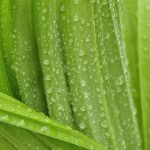Modern Nature Cure: Using Your Own Cells to Heal Osteoarthritis
Orthopedics
Dylan W. Krueger, NMD
Osteoarthritis (OA) is the most common form of arthritis, affecting 30.8 million Americans.1 This number continues to grow as Baby Boomers age and retire.1 The condition, which is also known as degenerative joint disease, consists of a progressive deterioration of cartilage in the joint, causing pain, inflammation, swelling, and stiffness.1 OA commonly affects the knee, especially in older adults who have a 45% lifetime risk of experiencing symptomatic OA pain.1 The toll of OA greatly impacts our economy through loss of work, costing $100 billion annually according to a 2011 report. Medicare coverage for total knee arthroplasty, alone, came to $3.5 billion annually in 2011.1 In fact, this is Medicare’s greatest single-procedure expenditure for older adults.1
These are already very troubling statistics, but even worse is that conventional care offers little relief short of total knee arthroplasty. Fortunately, in many cases naturopathic medicine combined with platelet-rich plasma offers substantial long-term pain relief without the need for medications or surgery.
Platelet-Rich Plasma for OA
Platelet-rich plasma (PRP) has been around for over 2 decades, though interest and research have both increased as of late, especially in the areas of orthopedic and sports medicine. Famous athletes such as Tiger Woods, Stephen Curry, and Russel Westbrook have helped bring PRP into the spotlight, fueling its public interest.2-4
PRP comes from the patient’s own body via a simple blood draw. The blood is then processed into a highly concentrated autologous platelet extract. This is accomplished through first centrifuging the whole blood into its components, extracting out the plasma layer, and then centrifuging the plasma a second time into a platelet-rich concentrate. The bottom one-third of the plasma solution contains the platelets in high amounts, which can be visibly seen as a platelet pellet. This dense, platelet-rich plasma solution is then activated by calcium chloride or other agents to induce platelet degranulation.5 Practitioners who bypass this critical step risk insufficient growth factor release and may experience, as a result, worse clinical outcomes. The activated PRP solution can then be injected into the damaged connective tissue for pain relief and regeneration.
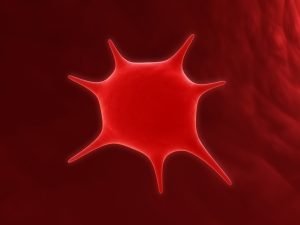
Figure 1. Platelet Cell
Mechanisms of Action
The mechanisms of action of PRP have been well documented, including in past issues of NDNR,6 but I will provide a brief refresher. In OA of the knee, there is chronic wear and tear of the joint, usually from damaged or lax ligaments and tendons. This can facilitate a loose joint that is prone to increased articular action that eventually causes the cartilage to break down. Osteoarthritic knees are also prone to poor vascularity, which reduces circulation into the joint and makes them heal more slowly.7
The PRP injection increases the local vascularity and also stimulates a localized healing cascade.8 This is accomplished through the degranulation of the alpha granules of the platelet cells. The platelets release signaling molecules and growth factors, including: platelet-derived growth factor (PDGF), transforming growth factor (TGF), platelet-derived epidermal growth factor (PDEGF), platelet-derived angiogenesis factor (PDAF), vascular endothelial growth factor (VEGF), epidermal growth factor (EGF), insulin-like growth factor (IGF), keratin growth factor (KGF), fibroblast growth factor (FGF), connective tissue growth factor (CTGF), tumor necrosis factor-alpha (TNF?), interleukin 1-beta (ILβ), and IL-8 into the site of injection.9 The new localized growth factors then initiate a healing cascade through anti-inflammatory agents, stimulating cellular matrices, cellular division, and mesenchymal stem cell recruitment, all of which has a cumulative effect of restoring function and relieving pain.9,10
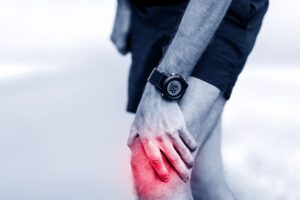
Case Study
Fred is a 77-year-old male who presented with a 5-year history of osteoarthritis of both knees, confirmed by MRI. Initially, his arthritic pain began very gradually with dull, achy pain after physical activity. Over the years the knee pain progressed to a constant dull, achy, and stiff pain, along with swelling following activity. During the previous 2 years, Fred had tried hyaluronic acid injections. These had provided initial relief; however, results had diminished as treatments continued. A new MRI was ordered, which revealed tricompartmental OA and chondromalacia that was accentuated in the medial compartment bilaterally. The MRI also revealed a medial collateral ligament (MCL) sprain, lateral patellar tilt, and patellar tendinosis in the right knee. Fred’s pain, according to the Visual Analogue Scale (VAS), was 6/10 on average, and 8/10 at its worst after activity.
We decided that PRP injections were an appropriate course of action, and began treatment. I performed activated PRP injections bilaterally for the entire knee joint, with intradermal lidocaine blebs at the injection sites beforehand. The PRP treatment included injections into the origin and insertions of the MCL, lateral collateral ligament (LCL), patellar tendon, joint capsule, and insertion of the quadriceps tendon. A larger injection was administered to the right MCL and patellar tendon. After the treatment, I prescribed a daily nutraceutical protocol consisting of 2150 mg omega-3 fatty acids, 1000 mg glucosamine, 1000 mg methylsulfonylmethane (MSM), 500 mg ginger extract, 500 mg turmeric extract, and 32 mg ascorbyl palmitate. I also started Fred on an anti-inflammatory Mediterranean diet, including plenty of omega-3 rich foods.
Three weeks later, I repeated the same activated PRP treatments. I followed up with Fred 1 month after the second PRP treatment. On the VAS, his knee pain bilaterally was 0/10 on average, and 1/10 following activity. Fred reported that before the treatments he was only able to walk 0.5 miles per day, whereas now he could walk up to 2 miles without any pain.
Summary
Platelet-rich plasma is a highly effective treatment option for OA, especially of the knee, and is a natural evidence-based therapy.11 Optimal PRP results are achieved with a comprehensive Hackett-Hemwall injection technique that treats the supporting structures of the joint that are contributing to the OA degeneration. My main treatment goals include 1) using a comprehensive approach; 2) activating the platelets before injection to increase effectiveness; and 3) not mixing anesthetic into the platelet solution, as it’s cytotoxic and can decrease the effectiveness.12 In my experience, PRP combined with naturopathic medicine delivers profound clinical outcomes that outperform conventional OA treatments such as NSAIDS, cortisone, pain medications, and hyaluronic acid injections. With this approach, patients experience minimal downtime, improved quality of life, and long-term pain relief.
References:
- Arthritis Foundation. Arthritis By The Numbers Second Edition: Book of Trusted Facts and Figures. 2nd edition. Osteoarthritis (OA).Available at: https://www.arthritis.org/Documents/Sections/About-Arthritis/arthritis-facts-stats-figures.pdf. Accessed May 14, 2018.
- Cox L. Tiger Admits to Platelet-Rich Plasma Therapy, What’s That? April 7, 2010. ABC News. Available at: https://abcnews.go.com/Health/Technology/tiger-woods-admits-platelet-rich-plasma-therapy/story?id=10303312. Accessed May 14, 2018.
- Stephen Curry’s ‘PRP’ knee therapy, explained. May 4, 2016. Fox Sports. Available at: https://www.foxsports.com/nba/story/stephen-curry-golden-state-warriors-what-is-platelet-rich-plasma-therapy-050416. Accessed May 14, 2018.
- Maloney J. Thunder’s Russell Westbrook to miss start of camp after PRP injection in right knee. September 22, 2017. CBS Sports. Available at: https://www.cbssports.com/nba/news/thunders-russell-westbrook-to-miss-start-of-camp-after-prp-injection-in-right-knee/. Accessed May 14, 2018.
- Cavallo C, Roffi A, Grigolo B, et al. Platelet-Rich Plasma: The Choice of Activation Method Affects the Release of Bioactive Molecules. BioMed Res Int. 2016;2016:6591717.
- Logan DL. The Pain Of Osteoarthritis: How Platelet-Rich Plasma Can Help. NDNR. September 2015;11(9):19-20. Available at: https://ndnr.com/geriatrics/the-pain-of-osteoarthritis-how-platelet-rich-plasma-can-help/. Accessed May 14, 2018.
- Findlay DM. Vascular pathology and osteoarthritis. Rheumatology (Oxford). 2007;46(12):1763-1768.
- Mautner K, Kneer L. Treatment of Tendinopathies with Platelet-rich Plasma. July 6, 2016. Fixbones Web site. https://www.fixbones.com/portals/2324/web_content/files/tx_tendinopathies_PRP_Mauntner.pdf. Accessed May 14, 2018.
- Cozma CN, Raducu L, Jecan CR. Platelet Rich Plasma- mechanism of action and clinical applications. J Clin Invest Surg. 2016;1(2):41-44.
- Sánchez-González D, Méndez-Bolaina E, Trejo-Bahena NI. Platelet-rich plasma peptides: key for regeneration. Int J Pept. 2012;2012:532519.
- Dai WL, Zhou AG, Zhang H, Zhang J. Efficacy of Platelet-Rich Plasma in the Treatment of Knee Osteoarthritis: A Meta-analysis of Randomized Controlled Trials. Arthroscopy. 2017;33(3):659-670.
- Carofino B, Chowaniec DM, McCarthy MB, et al. Corticosteroids and local anesthetics decrease positive effects of platelet-rich plasma: an in vitro study on human tendon cells. Arthroscopy. 2012;28(5):711-718.
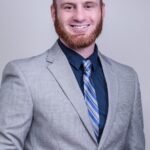 Dylan W. Krueger, NMD, specializes in naturopathic orthopedics. He has completed post-graduate training in regenerative medicine (Stem Cell Therapy/ PRP) and mentorship with some of Arizona’s top orthopedic specialists. Dr Krueger combined his interests in pain management with his business background to form Atlas Health Medical Group in Gilbert, AZ. His private practice focuses on regenerative injection therapy and natural pain management. His passion for non-surgical solutions, nutrition, and exercise is applied daily as he creates personalized treatment plans that fit patients’ busy lives. Dr Krueger loves offering cutting-edge therapies and has saved hundreds of patients from needing surgery.
Dylan W. Krueger, NMD, specializes in naturopathic orthopedics. He has completed post-graduate training in regenerative medicine (Stem Cell Therapy/ PRP) and mentorship with some of Arizona’s top orthopedic specialists. Dr Krueger combined his interests in pain management with his business background to form Atlas Health Medical Group in Gilbert, AZ. His private practice focuses on regenerative injection therapy and natural pain management. His passion for non-surgical solutions, nutrition, and exercise is applied daily as he creates personalized treatment plans that fit patients’ busy lives. Dr Krueger loves offering cutting-edge therapies and has saved hundreds of patients from needing surgery.





